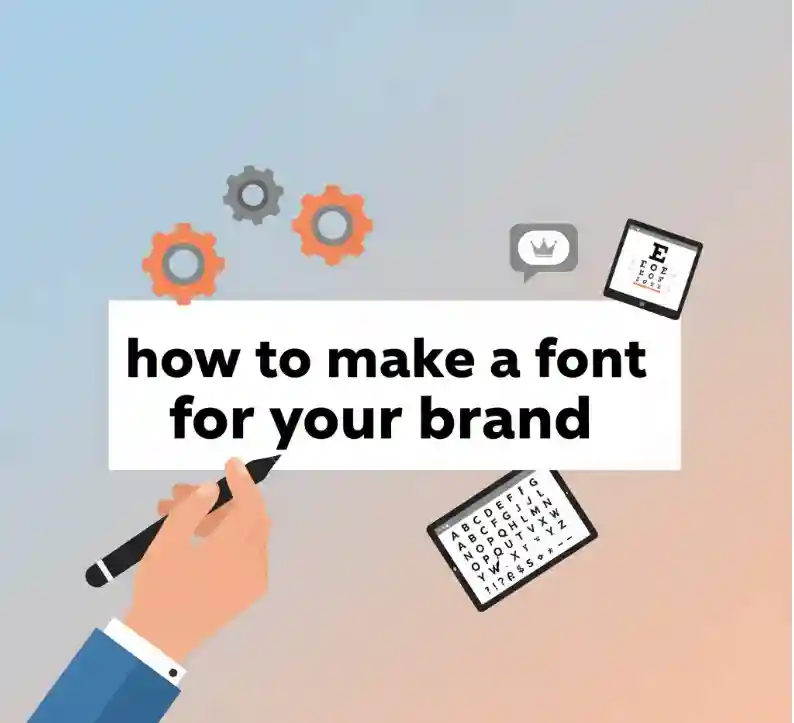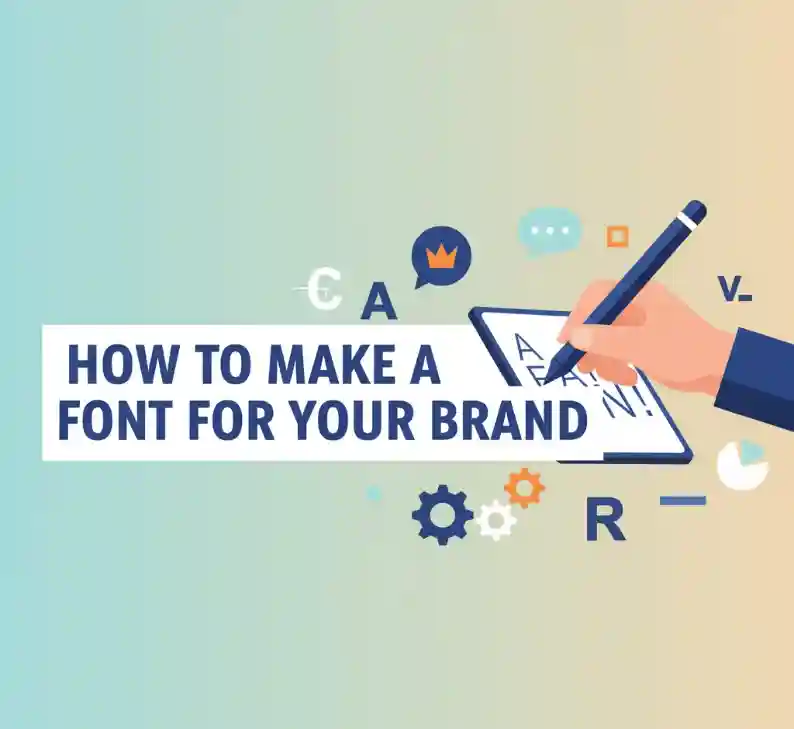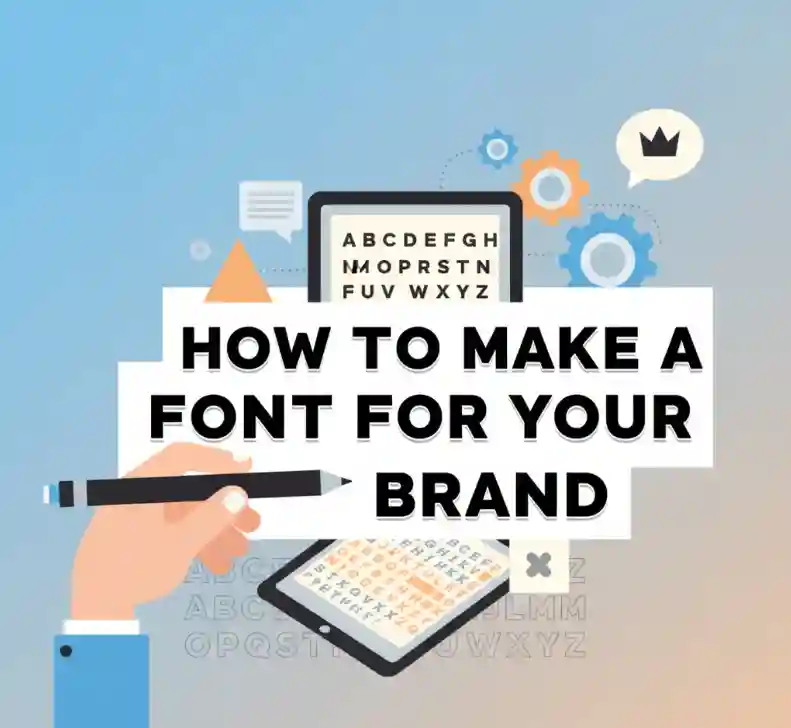Table of Contents
- Introduction: Why Fonts Define Your Brand
- The Psychology of Typography in Branding
- Step-by-Step: How to Make a Font for Your Brand
- Step 1: Define Your Brand Personality
- Step 2: Research and Moodboard
- Step 3: Sketch Your Letters
- Step 4: Digitize Your Typeface
- Step 5: Refine and Test
- Recommended Tools for DIY Font Design
- Showcase: Inspiring Fonts from RaisProject
- Common Mistakes to Avoid
- Final Thoughts: Building a Strong Identity Through Custom Fonts
- References

1. Introduction: Why Fonts Define Your Brand
A font is more than just a design element—it’s the visual voice of your brand. Think of how instantly recognizable the fonts of Coca-Cola, Disney, or Nike are. Fonts express identity, evoke emotion, and create trust at a glance.
Creating your own font gives you complete control over how your brand communicates. It ensures that every detail, from curves to spacing, reflects your story and values.
As noted by Letterhend, “Typography is branding in its purest form. It speaks before your words do.” (Letterhend Blog)
2. The Psychology of Typography in Branding
Fonts shape perception. Serif fonts often symbolize trust, authority, and tradition, while sans-serif fonts project modernity and simplicity. Handwritten or brush fonts, meanwhile, suggest creativity, warmth, and approachability.
For example:
- Luxury brands prefer clean, elegant serifs.
- Tech startups lean toward geometric sans-serifs.
- Creative boutiques favor expressive handwritten fonts.
Understanding this psychology helps ensure your custom font aligns perfectly with your brand’s personality.
3. Step-by-Step: How to Make a Font for Your Brand
Step 1: Define Your Brand Personality
Before sketching a single letter, ask:
- What emotions should my brand evoke?
- Is my style formal, playful, or minimal?
- Who is my audience?
Your answers will become your design compass.
Step 2: Research and Moodboard
Collect inspiration from magazines, packaging, Pinterest, or design platforms like Behance and Dribbble. Don’t copy—analyze why certain shapes or proportions feel right for your brand.
Step 3: Sketch Your Letters
Start with pencil sketches on paper or a digital tablet. Focus on a few key letters—A, O, H, g—to define your typeface’s DNA.
Consider contrast, stroke width, and personality consistency.
Step 4: Digitize Your Typeface
Transform your sketches into vectors using software like:
- FontForge (free, open-source)
- Glyphs App (Mac-friendly)
- FontLab (professional-grade)
- Calligraphr (for beginners)
These allow you to refine letterforms, spacing, and kerning precisely.
Step 5: Refine and Test
Export and test your font on real-world applications—your logo, packaging, and social media posts. Adjust as needed for readability, scale, and visual harmony.

4. Recommended Tools for DIY Font Design
| Purpose | Tool | Description |
|---|---|---|
| Sketching | Procreate / Adobe Fresco | For precise digital lettering |
| Vectorizing | Adobe Illustrator | Clean vector paths for each letter |
| Font Editing | Glyphs App / FontLab | Adjust spacing, kerning, export |
| Testing | Figma / Canva | Preview your font in real layouts |
These tools streamline the creative process and make it easier to maintain consistency across your design.
5. Showcase: Inspiring Fonts from RaisProject
At RaisProject.com, our team designs handcrafted, high-quality fonts that help brands communicate their unique identity. Here are some perfect examples of fonts that embody strong brand character:
- Legendry – Display Font
A bold handcrafted display font ideal for headlines and impactful branding projects. - Artlist – Display Font
A creative, unconventional font that’s perfect for modern brands seeking originality. - Finish Playing – Racing Display Font
A dynamic, sporty font that brings energy to gaming, racing, or youth-oriented brands. - Hailstone – Display Font
A stylish display font perfect for lifestyle, fashion, and café branding. - Jabbing – Serif + Script Duo
A beautifully paired serif and script combination—great for premium or elegant brand identities. - Deep Affection – Script Font
A romantic handwritten font suited for boutique, wedding, and personal branding projects.
Each of these fonts demonstrates how different styles convey distinct personalities—proof that typography truly defines brand storytelling.
6. Common Mistakes to Avoid
Even experienced designers can make font creation missteps. Avoid these pitfalls:
- ❌ Poor legibility – Always test at various sizes.
- ❌ Inconsistent spacing – Kerning and tracking are crucial for a polished look.
- ❌ Too many details – Simplify shapes for clarity.
- ❌ Ignoring platform testing – Your font must look great on print, web, and mobile.
A good rule of thumb: if it doesn’t read well instantly, refine it further.

7. Final Thoughts: Building a Strong Identity Through Custom Fonts
Learning how to make a font for your brand empowers you to express your story visually and memorably. A custom font ensures every letter you use is part of your signature identity.
Whether you design it from scratch or customize one from our RaisProject Font Collections, investing in personalized typography strengthens your visual voice and brand credibility.
Your font is your fingerprint—unique, recognizable, and irreplaceable.
Make sure it tells your story.
